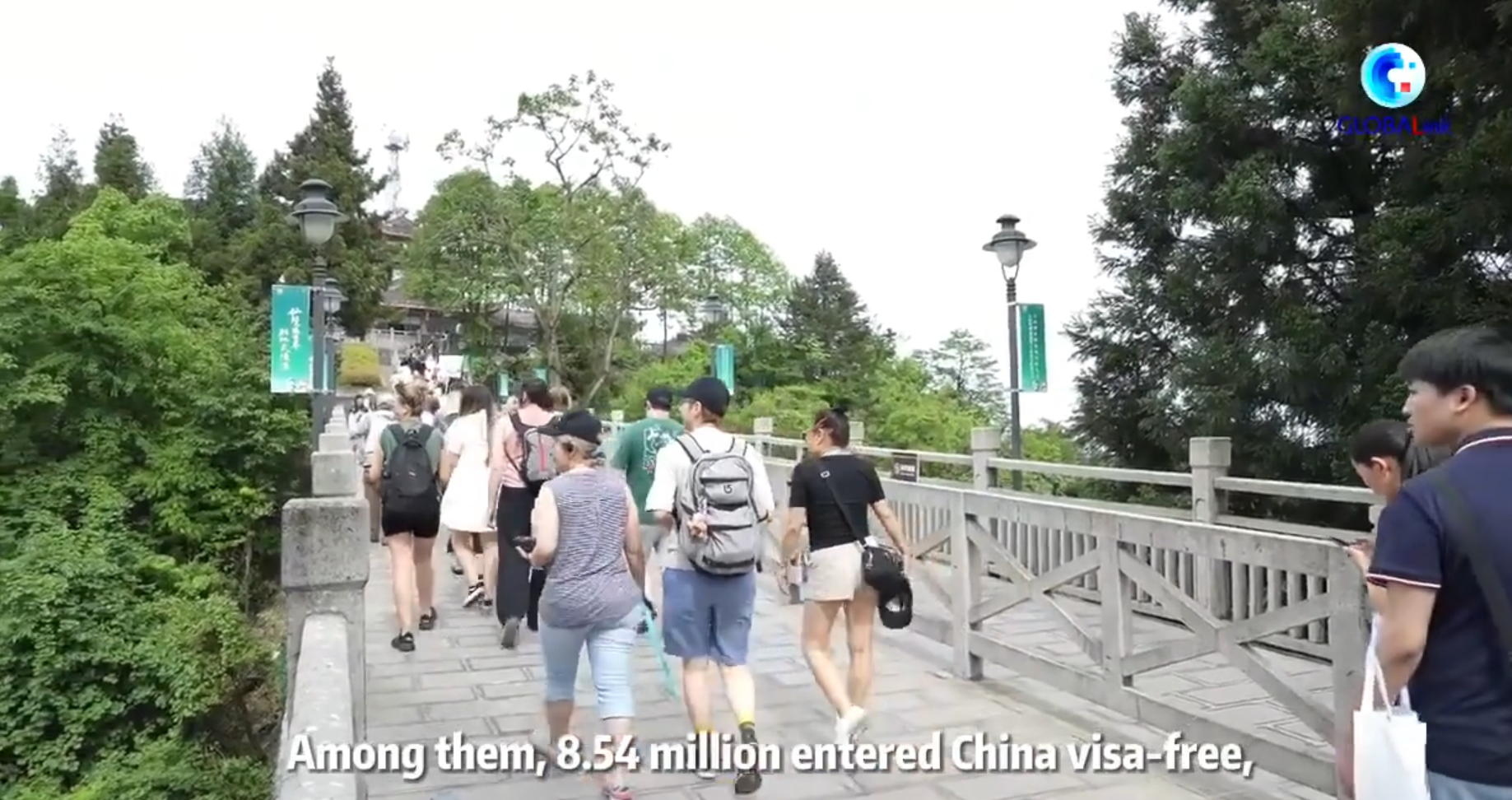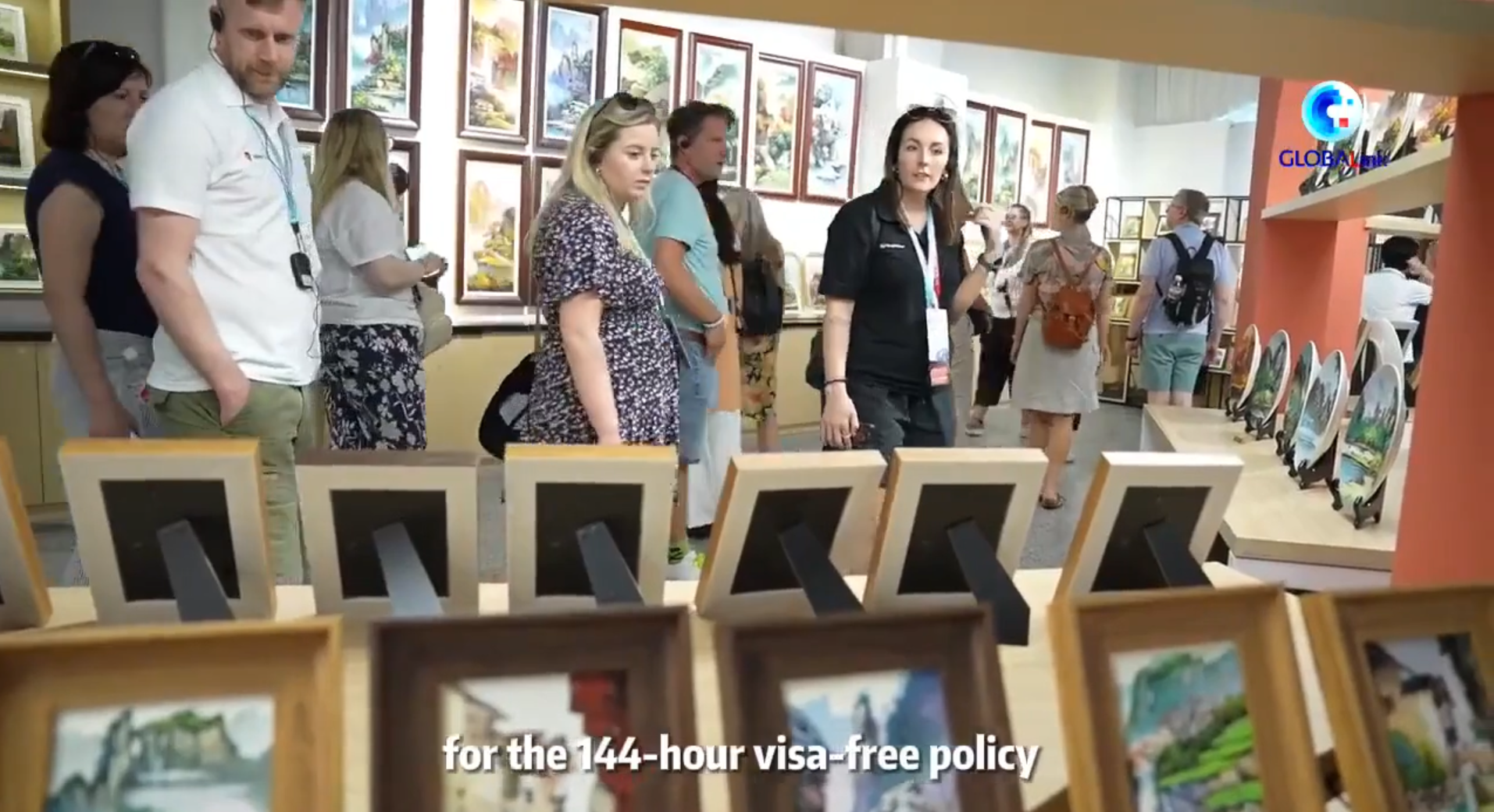
CHANGSHA/SHANGHAI, July 16 — Jin Yeong-deg, a 72-year-old man from the Republic of Korea, opened his Korean payment app Kakao Pay and showed the QR code to the cashier. Within seconds, the scan was complete, and he successfully purchased his items.
This would be a very ordinary transaction in the Korean cities of Seoul or Busan, but it actually took place in Zhangjiajie, a tourist city in central China’s Hunan Province.
“Traveling in Zhangjiajie is very convenient,” said Jin. “I didn’t expect to be able to use mobile payments here just like a local.”
This was Jin’s second visit to the breathtaking landscape of Zhangjiajie — home to the real prototype of the floating mountains in the Avatar — and he saw significant changes since his first trip in 2004.
According to the Travel & Tourism Development Index 2024 of the World Economic Forum, China ranks eighth among the top 10 countries for travel and tourism.
TRAVEL MADE EASY
According to a recent survey conducted by Beijing Foreign Studies University, among 714 foreign tourists from 103 countries, 86 percent of those who have visited China believe the payment experience has become more convenient. The vast majority of these tourists used mobile payment methods.
By the end of 2023, China’s mobile payment penetration rate had reached 86 percent, the highest in the world. Foreigners can now easily bind their overseas bank cards with Alipay or Tenpay, China’s two major payment apps, thanks to simplified mobile payments.
In the first half of this year, foreign card transactions using mobile payment platforms surged 6.65 times from the previous year to nearly 37.4 million, according to data from Chinese online payment clearing house NetsUnion Clearing Corporation.
The apps also enable convenient transportation for foreign tourists.
Spanish couple Miguel and Irena Rodriguez Jimenez used Alipay to take the subway in Shanghai and book ride-hailing services.
“Some warm-hearted locals helped us download the app and register,” said the wife. “It was a bit complicated at first, but now we can use it adeptly.”
GATE OPENING WIDER
China is welcoming more tourists with new visa policies.
On Monday, China expanded its 144-hour visa-free transit policy to 37 entry ports. Foreign nationals from 54 countries, including the United States, Canada and Britain, are eligible for the policy for short-term travel and business visits.
The country is also piloting visa-free travel for ordinary passport holders from more than a dozen countries, including France, Spain, Australia and Poland, allowing them to enter China visa-free for up to 15 days for business, tourism, visiting relatives and friends, and transit.
Data from the National Immigration Administration showed that the number of foreigners visiting China in the first half of this year exceeded 14.6 million, an increase of 152.7 percent compared with the same period last year. Of these, more than 8.5 million, or 52 percent, entered visa-free, a 190 percent increase year on year.
Eva Gajewska is the manager of a travel agency in Warsaw, Poland. Since the visa-free policy started, she has received lots of phone calls asking about tours to China.
“In the past, a visitor usually spent about 100 U.S. dollars for the visa to China, and had to wait for seven days,” she said, hailing the new policy a “long-awaited” move. The company is now designing new routes to offer its clients more choices for their China trips.
Edward Iglesias, a 61-year-old Australian tourist, embarked on a 17-day tour of China, starting from Kashgar in northwest China’s Xinjiang Uygur Autonomous Region.
Having applied for his visa before the policy change, he felt the new policy would definitely make things easier for travelers.
With simplified entry procedures, Iglesias plans to recommend China as a tourist destination to his friends, praising its “nice people and beautiful scenery.” He expressed a desire to return when the weather is cooler, “maybe in autumn or spring.”
SEEING IS BELIEVING
Many visitors have changed their perspective on China after their visits to the country.
Colombian tourist German Raigosa was visiting China with his family for the first time. “It’s surprising to see the public transportation, and how clean the cities are compared to other cities like New York,” said the 71-year-old father.
“I didn’t know that Chinese people are so nice,” added his 29-year-old daughter, Susana Raigosa. “I was surprised at how little I knew about these cities.”
Arnr Herrmann from New Zealand returned to Shanghai 28 years after his first visit. “Back then, I only remember seeing the Oriental Pearl Radio and TV Tower as the landmark,” said the leader of a 60-student group. This time, he marveled at China’s development and the juxtaposition of both historical and modern buildings in the metropolis.

“We are impressed by the cleanliness of all the places,” said Samuel Juara from Mexico via WeChat, which he downloaded for his trip to China. “The respect from all the people and their willingness to help, the amount of electric cars and beautiful buildings, the electronic advances and communicating measures … are very impressive.”
New measures are being implemented across China to better serve international travelers in tourism cities. For instance, the Bank of China’s Zhangjiajie branch has upgraded the airport’s self-service currency exchange machines. These machines now accept over 20 currencies, including Australian dollars, up from six previously.
Chinese customs authorities have made declarations easier for foreign passengers by using mobile phone apps. “Foreign tourists can now complete their arrival process and pass through customs in just 30 minutes,” said Liu Jinbo, director of Zhangjiajie Customs. He added that the average clearance time for inbound passengers is expected to drop further to under 10 minutes by the end of September.
“You will know how beautiful China is only after you visit the country,” said Shin Young-yun, a team leader with Korean travel agency Modetour.
“China is a very safe and lovely country, which I have recommended to my compatriots. I know many of them who have visited once would like to go there again,” he added. “Hopefully in the future more Koreans, more foreigners, can visit and see the real China.”

copy by gov.cn